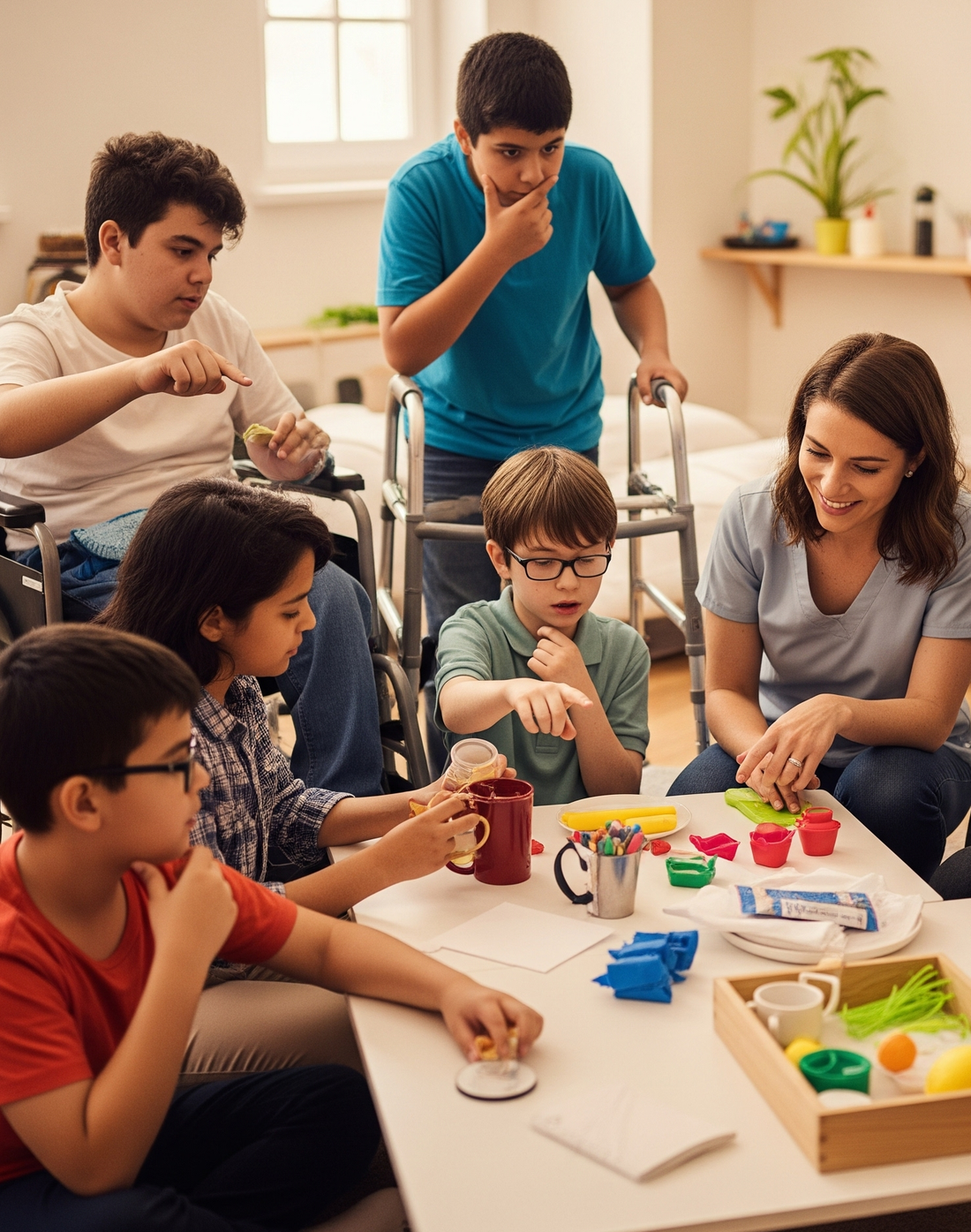
Using CO-OP Principles In Schools
Share
By Lara Barros a school-based occupational therapist in the suburbs of Chicago.
Goal: CO-OP Principles can support your Goal of providing evidence-based, top-down services in the school setting. Schools, a natural habitat for children, are the perfect place for using the CO-OP Principles whether you are consulting or providing direct service. Here some GPDC tips!
Plan: To successfully implement CO-OP in the schools you must have a Plan! CO-OP is client-centered and a top-down approach, you must start with the student’s goal. However, because many student goals don’t originate with the student, setting student goals can be complicated. It is important to take the time to understand the desired outcomes and expectations with all relevant stakeholders. Knowing the expectations and desired outcomes will help the therapist guide the student towards a goal that is meaningful to them and supports desired stakeholder outcomes. An adult may identify a goal, but the student will need to make it their own. For example, a teacher’s goal of: “I need them to write neatly.” May become, “I want to write so that I don’t lose points on my spelling test." Or “I want to be able to read what I wrote in my assignment notebook.” Once the student reaches their first goal, they will feel more confident and be ready for the next one! To support participation, you must Identify at least one supportive adult that can observe the student’s performance! The adult will need to be taught to help guide the student rather than adjusting things. You will need this adult to collaborate with, support problem-solving, generalization, and transfer of skills. Once you have identified the student’s goal and a supportive adult, you can start to assess. You are in the student’s environment, set up an observation of the student’s occupational performance where it typically occurs. If this isn’t possible, consider recording their performance to watch later with or without the student. Don’t forget that it is hard for teachers, assistants, and peers to allow the student to struggle. Make sure the teacher and staff know that you are observing the student’s performance without support! It is necessary for you to see the breakdown(s) in the student’s performance!
Do: Dynamic Performance Analysis!
This is where the fun begins! Start the process of dynamic performance analysis (DPA) by observing or recording the student performing the task in the natural environment. Rate the performance in relation to the identified goal using the Performance Quality Rating Scale (PQRS) and record breakdowns. Consider whether the breakdowns lie in the student, the environment, and/or the task and record them in observable terms. Instead of saying, “Her hands are too weak to hold the laces when ….,” you will say, “She drops the laces when…”
The problem-solving process may take place in the student’s classroom, or in a separate location depending on the complexity of the breakdowns and the classroom environment. You will use guided discovery and enabling principles to guide the student to identify the task breakdowns and develop strategies for success. Your job is to promote learning and success!
If the problem-solving occurs outside of the natural environment, you will need guide the student to consider factors that may impact performance. Resist the temptation to rephrase; use their own words and allow them to write the plan if it is appropriate. Leave the plan with the student and the supportive adult(s).
Assign homework! Did the student come up with a strategy that worked? Have them see if that same strategy is useful doing other activities. For example, if the student identifies that they squeeze the scissors too hard when they’re cutting, and this makes their hand tired…. “Are there other times that you squeeze harder than you need to? Can you still do those things if you aren’t squeezing as hard?” Or, if they noticed that when they write, they don’t let the letter “j” fall below the line…. “I wonder if there are other letters that fall below the line. Let me know next time if you find any more letters that do that too.”
Check: Continue DPA until the goal is met. Be sure to document progress using the PQRS. Seek feedback from the supportive adult or other adults that observe the student’s performance on a regular basis. Guide them in supporting the student’s problem solving and performance.
Case Study: Catya is a fourth-grade student who receives special education services for learning disabilities and emotional regulation challenges. Catya does not receive direct school-based OT services, but OT has been asked to problem solve student specific issues in the past. She recently told her special education teacher that she wanted to work on three goals: 1) Making the letter “y” in her name better, 2) Make the letter “x” so that it does not resemble a “+”, during math, and 3) To cut better with scissors. After the teacher provided her with handwriting worksheets to practice, Catya had not made any gains, so the teacher reached out to OT. Catya met with the OT and identified the same goals. When asked to choose which goal was most important to her, she ranked them 1) making the “y”, 2) making the “x”, and finally 3) cutting out her spelling words with scissors. Catya was observed in her smaller special-education classroom and problem-solving was done in a private setting per her request.
1st, 20-minute session: Catya’s first goal was to write the letter “y” in her name. To determine the style, either straight, or curved, we completed a quick internet search to identify her final goal. Once the specific goal was set, Catya was observed writing her name on a worksheet in the classroom. She was able to write each letter but reversed the “y”. She was given a PQRS score of 5 on making her goal "y". It was noted that the short line was to the right of the longer line, rotating the “y” in comparison to the other letters.
2nd 20-minute session: Knowing that Catya enjoyed seeing recordings of herself, I recorded her writing her name from over her shoulder. Together we looked at how her “y” was different than her goal and focused on the recording and how she made her “y”. We looked at the order in which she made the lines (long then short) and wondered what would happen if she changed the order that she made them (short then long). She changed the order and was able to make her goal “y”. She did this several times just writing the letter and then wrote it within her name, each time resembling her goal “y”. We talked about what her “plan” should be to help her reach her goal every time she writes her name. She decided that when the “y” doesn’t look the right way to her, she would try it a different way.
She was given homework to use her plan to write the “y” when she wrote her name and also to look for other times her plan of “trying it a different way” would work. Her supportive adults (special-education teacher and teaching assistant) were notified of the plan in person and via email.
3rd 20-minute session: Catya proudly demonstrated her ability to write her name using her goal “y”. She introduced a new part of her plan that included drawing the letter with her finger in the air before writing it if she was unsure. She stated that she met her goal, a PQRS is recorded as a 10 in the small setting and confirmed with her supportive adult! On to the next goal!
The DPA on making an “x” when writing math problems is started with Catya writing a problem 2 x 3 = 6. She wrote 2 + 3 = 6.We recorded her writing another problem from over her shoulder and watched the recording. She saw the sequence of lines that she used to create the “x” that turned into a “+”. We watched and we both wondered if the same plan would work for her “x” that worked for her “y”. She made the strokes in a different sequence and her “+” turned into an “x”. Her PQRS went from a 5 to a 10 in minutes.
We missed a few weeks but after 1 month she continues to write her name and multiplication problems using her goal “y” and “x”.Now, on to her cutting goal!
Have you become interested and are you searching for some more info? Please have a look at the full manual at https://sites.google.com/view/co-op-principles-for-school-ot/home
